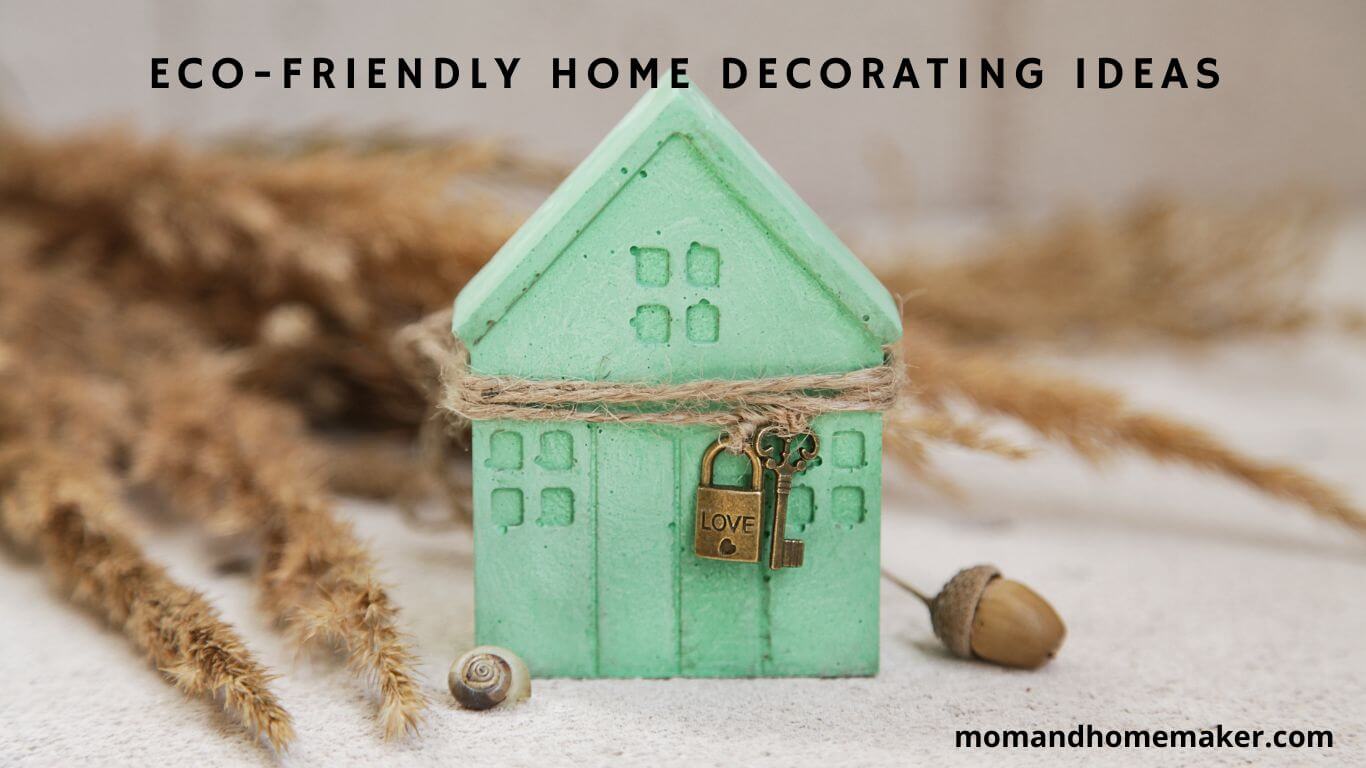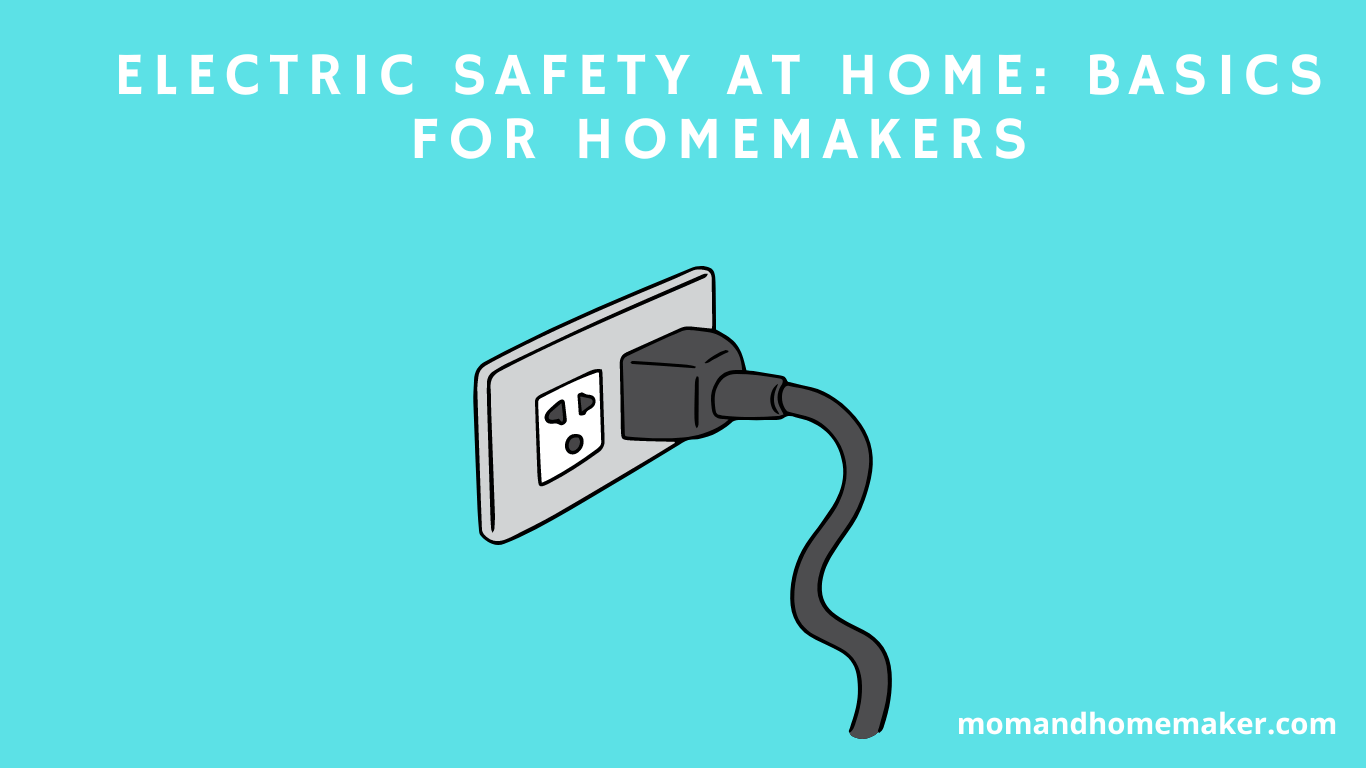Creating a sustainable and eco-friendly home is easier than you think. Let’s explore some innovative ideas to transform your space into an environmentally friendly haven.
By incorporating these eco-friendly home decorating ideas, you not only express your style but also contribute to the protection of our planet. Choose sustainable materials, embrace minimalism, and upcycle old furniture to reduce waste.
Opt for non-toxic paint to ensure a healthy living environment. You can reduce water consumption, incorporate renewable energy sources, and support local and sustainable businesses.
By adopting these practices, you join a community of like-minded individuals dedicated to living a more eco-conscious lifestyle. Start your journey towards a greener and more sustainable home today.

Choosing Sustainable Materials
When it comes to selecting sustainable materials for your home decor, it’s important to opt for those made from eco-friendly resources. By choosing sustainable furniture, you can contribute to a healthier environment while still maintaining a stylish and inviting living space.
Look for furniture that’s made from reclaimed or responsibly sourced wood, as well as pieces that have been manufactured using low-impact production methods.
Another crucial aspect of sustainable home decor is using eco-friendly paint. Traditional paints can release harmful toxins into the air, but eco-friendly options are made from natural ingredients and have low or no VOC (volatile organic compounds) content. These paints not only reduce indoor air pollution but also offer a wide range of colors to suit any style.
In addition to furniture and paint, it’s essential to consider energy-saving appliances for an eco-conscious home. Look for appliances with energy-efficient labels, such as Energy Star, which can help reduce electricity consumption and lower your carbon footprint.
When it comes to bedding, organic options are the way to go. Organic bedding is made from natural materials, such as organic cotton or bamboo, without the use of harmful chemicals or pesticides. Not only is this better for your health, but it also supports sustainable farming practices.
By incorporating sustainable materials into your home decor, you can create a space that reflects your eco-conscious values and provides a sense of belonging to a community that cares for the planet.
Incorporating Natural Elements
To incorporate natural elements into your eco-friendly home decor, you can enhance the overall aesthetic and promote a closer connection with nature.
One way to do this is by bringing the outdoors inside. Open up your living space with large windows that let in plenty of natural light and provide a view of your garden or surrounding greenery.
Another way to incorporate natural elements is by using a natural color palette. Choose earthy tones like greens, browns, and blues to create a calming and organic atmosphere. Consider incorporating organic textures into your decor.
Use natural materials like wood, bamboo, or cork for your flooring, furniture, and accessories. These materials not only add a touch of nature to your home but are also sustainable and eco-friendly.
Nature-inspired artwork is another great way to bring the outdoors inside. Hang paintings or photographs depicting landscapes, flowers, or animals to create a sense of connection with the natural world.
Lastly, opt for sustainable furniture design. Look for pieces made from recycled or reclaimed materials, or choose furniture that’s produced using environmentally friendly manufacturing processes.
Embracing Minimalism
Embracing a minimalist lifestyle can have a positive impact on your eco-friendly home decor. The key is simplicity and decluttering. By focusing on what truly brings you joy and serves a purpose, you can create a serene and clutter-free environment.
Mindful consumption plays a crucial role in minimalism, as it encourages you to think twice before making purchases and consider their environmental impact.
Sustainable fashion is also a part of minimalism, promoting the idea of buying fewer, higher-quality clothing items that are ethically made and designed to last longer.
When it comes to decluttering, organizing your belongings into categories can help you create a more minimalist space. It’s important to let go of items you no longer use or need, reducing waste and promoting sustainability. By being intentional with your choices, you can live a more meaningful life and feel at peace in your home.
Upcycling Old Furniture
To promote sustainability in your eco-friendly home decor, consider upcycling your old furniture. This creative approach breathes new life into tired and outdated pieces, offering a unique touch that store-bought furniture can’t replicate. Instead of discarding your old furniture, why not give it a DIY makeover?
Upcycling your furniture not only reduces waste but also allows you to express your style. There are several sustainable furniture hacks you can try. For instance, transform an old wooden ladder into a stylish bookshelf or repurpose a dresser into a trendy TV stand.
By thinking outside the box and using your imagination, you can create functional and beautiful pieces that reflect your unique taste.
Beyond reducing your carbon footprint, upcycling old furniture saves you money by avoiding expensive new purchases. Additionally, you’ll have the satisfaction of knowing you’ve contributed to a more sustainable and environmentally friendly world.
So, gather your tools, get creative, and start repurposing your old furniture. Create a home that’s both stylish and eco-friendly, while enjoying the process of giving new life to your cherished pieces.
Using Non-Toxic Paint and Finishes
Choose non-toxic paint and finishes for healthier and eco-friendly home decor. When painting your walls or finishing your furniture, opting for non-toxic options is a great way to create a safe and sustainable living environment.
Traditional paint and finishes often contain volatile organic compounds (VOCs), which can release harmful chemicals into the air, affecting indoor air quality and your overall well-being. By choosing low-VOC paint, you can reduce your exposure to these toxins and create a healthier home atmosphere.
To make your home decor even more eco-friendly, consider using natural dyes for coloring your fabrics and textiles. Natural dyes are derived from plants, fruits, and other organic sources, making them a sustainable and non-toxic alternative to synthetic dyes. They not only add a unique touch to your home decor but also contribute to a greener planet.
In addition to paint and dyes, it is important to select eco-friendly varnish, sustainable finishes, and non-toxic sealants for your furniture and woodwork. These products are made from natural and renewable materials, minimizing the environmental impact and ensuring a healthier living space for you and your loved ones.
Here is a table highlighting some eco-friendly paint and finish options:
| Product | Description |
|---|---|
| Low VOC Paint | Contains significantly lower levels of volatile organic compounds, reducing air pollutants and improving indoor air quality. |
| Natural Dyes | Derived from plants and organic sources, these dyes are non-toxic and sustainable, adding a natural touch to your home decor. |
| Eco-Friendly Varnish | Made from natural and renewable materials, this varnish provides a protective and sustainable finish for your furniture and woodwork. |
| Sustainable Finishes | Environmentally friendly finishes that are made from renewable resources and have minimal environmental impact. |
| Non-Toxic Sealants | These sealants are free from harmful chemicals and provide a safe and eco-friendly option for protecting your surfaces. |
Opting for Energy-Efficient Lighting
To achieve energy efficiency in your eco-friendly home decor, consider using LED bulbs. LED lighting is a popular choice among homeowners who want to save energy and reduce their carbon footprint.
These bulbs consume significantly less electricity compared to traditional incandescent or CFL bulbs, resulting in lower energy bills. LED bulbs also have a longer lifespan, reducing the need for frequent replacements and minimizing waste.
In addition to LED lighting, you can explore other energy-efficient options for lighting your home. Smart lighting systems enable remote control of lights, ensuring they’re only on when necessary.
Natural daylighting is another eco-friendly solution as it utilizes sunlight to illuminate your home during the day. Installing skylights or large windows can maximize the use of natural light.
For an even greater commitment to energy efficiency, consider solar-powered lighting. Solar lights harness the sun’s energy to power the bulbs, making them a sustainable and renewable lighting choice. You can utilize solar-powered lights for outdoor lighting, such as garden lights or pathway lights.
Investing in Eco-Friendly Window Treatments
When it comes to creating eco-friendly home decor, you can make a positive impact by investing in environmentally friendly window treatments. By choosing blinds, curtains, shades, drapes, or shutters that are made with sustainable materials and designed to reduce energy consumption, you not only enhance the aesthetic appeal of your home but also contribute to a healthier environment.
Eco-friendly blinds are a great option as they’re made from sustainable materials and are designed to reduce energy consumption. They come in a variety of styles and colors to suit your taste.
Sustainable curtains, on the other hand, are made from organic fabrics like hemp or bamboo, which are grown without the use of harmful chemicals. These curtains not only add elegance to your windows but also promote sustainable living.
Energy-efficient shades are another excellent choice for eco-conscious homeowners. These shades are designed to block out the sun’s heat during the summer months, reducing the need for air conditioning and keeping your home cool naturally.
If you’re looking to minimize your carbon footprint, consider green drapes made from recycled materials such as plastic bottles or old fabric scraps.
Lastly, environmentally friendly shutters made from sustainable wood sources like bamboo or reclaimed wood are a great addition to your home decor. These shutters not only provide privacy and light control but also add a rustic and natural touch.
Investing in eco-friendly window treatments is a simple yet impactful way to contribute to a more sustainable future. By incorporating these environmentally conscious options into your home, you can create a space that not only looks beautiful but also promotes a healthier planet for future generations.
Creating a Green Indoor Garden
To create a green indoor garden, consider incorporating plants that thrive in low-light environments. These plants are perfect for those who want to bring nature into their homes and enjoy a sense of belonging.
An indoor herb garden is a great addition to your green space, providing fresh herbs at your fingertips for cooking and garnishing.
Vertical gardening is another option to maximize space and create a stunning visual display. By using hanging pots or wall-mounted planters, you can create a lush green wall that adds a touch of nature to your living space.
Air-purifying plants are also a great choice for an indoor garden, as they add beauty while cleaning the air in your home. Consider plants such as snake plants, pothos, or peace lilies.
For a more advanced option, hydroponic systems can be a great way to grow plants indoors without soil. These systems use water-based solutions to deliver nutrients, resulting in faster growth and higher yields.
Finally, succulent arrangements are perfect for those who want a low-maintenance indoor garden. Succulents require minimal watering and are known for their unique and beautiful shapes.
With these ideas in mind, you can create a green indoor garden that adds beauty, freshness, and a sense of belonging to your home.
Utilizing Recycled and Organic Textiles
Creating a green indoor garden is a great step towards an eco-friendly home. To further enhance your sustainability efforts, consider utilizing recycled and organic textiles. Sustainable fashion isn’t limited to clothing; it also extends to the fabrics you choose for your home.
Opting for organic textiles not only adds style to your home but also contributes to a healthier environment.
When it comes to bedding, it’s essential to choose eco-friendly options. Look for bedding made from organic cotton or bamboo, as these materials are grown without harmful pesticides and chemicals. By supporting sustainable agriculture, you’ll not only contribute to a greener planet but also enjoy a comfortable and healthy sleep environment.
In addition to bedding, incorporating recycled textiles into your home decor is a fantastic idea. You can find curtains, rugs, and upholstery made from recycled materials like plastic bottles or reclaimed fabrics. By giving new life to these materials, you’ll not only reduce waste but also add a unique and eclectic touch to your home.
Furthermore, organic textiles can extend beyond fashion and home decor. Consider integrating organic skincare products into your daily routine for a more natural and gentle approach to self-care. And when it comes to cleaning, opt for green cleaning products that are free from harsh chemicals and toxins.
Reducing Waste With Smart Storage Solutions
To enhance your sustainability efforts, you can reduce waste in your home by implementing smart storage solutions. These eco-friendly organization techniques not only create a clutter-free space but also contribute to waste reduction and a more sustainable lifestyle.
One key aspect of smart storage solutions is decluttering for sustainability. Begin by going through your belongings and identifying items that you no longer use or need. Instead of throwing them away, consider donating or recycling these items. This not only prevents unnecessary waste but also allows others to benefit from your unwanted items.
When seeking sustainable storage options, look for products made from recycled materials or those that are recyclable themselves. Opt for storage containers made from bamboo, cork, or other sustainable materials. These choices not only reduce waste but also add a touch of natural beauty to your space.
Maximizing the space you have is another smart storage solution. Utilize vertical space by installing shelves or hanging storage units. This allows you to store more items without taking up additional floor space. Additionally, consider using storage solutions that can be easily rearranged or expanded as your needs change.
By implementing these smart storage solutions, you can create an organized and clutter-free home while reducing waste and living a more eco-friendly lifestyle. Embrace the concept of decluttering for sustainability and choose sustainable storage options that align with your values. Together, we can make a positive impact on the environment and create a sense of belonging within our homes.
Implementing Eco-Friendly Flooring Options
Choose eco-friendly flooring options to create a sustainable and stylish home.
When it comes to flooring, there are several environmentally friendly and aesthetically pleasing choices.
Sustainable wood is an excellent option as it’s sourced from responsibly managed forests, preserving natural resources.
Cork flooring, made from the bark of cork oak trees, is another great choice. The harvesting process doesn’t harm the trees, and cork is renewable and biodegradable.
Bamboo flooring is also gaining popularity due to its fast-growing nature and durability. It’s a renewable resource that regrows quickly, making it an eco-friendly alternative to traditional hardwood floors.
For an innovative option, consider recycled tile made from materials like glass, porcelain, and ceramic that would have otherwise ended up in landfills.
Lastly, concrete alternatives such as polished concrete or terrazzo can be created using recycled materials, reducing the need for new resources.
Incorporating Vintage and Thrifted Items
When decorating your eco-friendly home, you can add sustainability and unique character by incorporating vintage and thrifted items. Choosing vintage decor ideas not only reduces waste but also creates a warm and inviting space with a story to tell.
Thrifting tips can help you navigate secondhand stores and online marketplaces to find affordable hidden gems. Look for secondhand furniture that can be upcycled or repurposed, giving them a new lease on life. By opting for antique treasures, you not only add a touch of history to your home but also contribute to sustainable shopping practices.
Vintage and thrifted items are often one-of-a-kind and bring a sense of nostalgia and charm to your living space. Whether it’s a beautifully aged leather armchair or a vintage chandelier, these pieces can become focal points that spark conversation and create a sense of belonging.
Harnessing Natural Light
Maximize the eco-friendliness of your home decor by harnessing the natural light available to you. By maximizing sunlight, you not only reduce your energy consumption but also create a warm and inviting atmosphere in your living space.
To achieve this, consider implementing natural lighting solutions that enhance the brightness of your home.
Start by evaluating your window design. Opt for larger windows or install additional windows to allow more natural light to enter your home. This will increase daylight utilization and minimize the need for artificial lighting during the day.
Choose sustainable window treatments such as sheer curtains or blinds made from eco-friendly materials. These treatments allow sunlight to filter through while still providing privacy.
Incorporating reflective surfaces, like mirrors or shiny furniture, can also help bounce natural light around the room, making it feel brighter and more spacious. Additionally, consider painting your walls in light, neutral colors, as these can reflect sunlight better than darker hues.
Remember to keep your windows clean to ensure maximum light enters your home. Regularly clean both the inside and outside of your windows to remove any dirt or grime that may obstruct sunlight.
Creating a Composting System
To further enhance the eco-friendliness of your home decor, you can take advantage of your organic waste by implementing a composting system.
Composting isn’t only a great way to reduce your carbon footprint, but it also provides numerous benefits for your garden and plants. By turning your kitchen scraps and yard waste into nutrient-rich soil, you can create a closed-loop system that promotes sustainability and nourishes your plants.
Getting started with composting is easy! Here are some techniques and tips to help you:
Outdoor Composting:
- Reduces landfill waste: Collect organic waste and yard trimmings.
- Enriches soil: Add browns (e.g., dry leaves) and greens (e.g., fruit and vegetable scraps).
Indoor Composting:
- Suppresses plant diseases: Mix materials and add water to maintain moisture.
Vermicomposting:
- Improves soil structure: Turn the pile regularly to aerate it.
Trench Composting:
- Saves money on fertilizers: Wait for the compost to mature before using.
Grasscycling:
- Provides a natural source of fertilizer: Leave grass clippings on the lawn to decompose.
Remember to choose a composting bin that suits your needs and space constraints. Whether you opt for an outdoor bin, indoor composting system, or even vermicomposting with worms, the key is to provide the right balance of organic waste, air, and moisture to facilitate the composting process.
By implementing a composting system, you not only reduce waste but also nurture a healthier ecosystem in your backyard.
Reducing Water Consumption
To enhance the eco-friendliness of your home decor, you can reduce water consumption through some simple changes. One effective method is rainwater harvesting, which involves collecting and storing rainwater for various household uses such as watering plants or cleaning.
By installing a rainwater harvesting system, you can decrease your reliance on the municipal water supply and contribute to water conservation efforts.
Another practical approach is to incorporate drought-resistant landscaping. Choose plants that require minimal watering and are well-suited to your local climate. These plants can thrive with minimal irrigation, reducing the amount of water needed to maintain a beautiful garden.
Investing in water-saving appliances is also a smart choice. Look for appliances with high energy efficiency ratings and water-saving features.
For example, opt for a dishwasher and washing machine that offer water-saving modes or options. These appliances can significantly reduce your water consumption while still delivering optimal performance.
Greywater recycling is an innovative method to minimize water wastage. It involves collecting and treating water from sources like sinks, showers, and washing machines for reuse in non-potable applications such as irrigation or toilet flushing.
By recycling greywater, you can further decrease your water consumption and contribute to a more sustainable lifestyle.
Lastly, replacing standard showerheads with low-flow showerheads can make a significant difference in water consumption. These showerheads are designed to use less water while still providing a satisfying shower experience.
Incorporating Renewable Energy Sources
Making your home decor more eco-friendly is as simple as incorporating renewable energy sources. By utilizing renewable energy, you can reduce your carbon footprint and contribute to a sustainable future. There are various options available for integrating renewable energy sources into your home.
One popular choice is solar panels, which allow homeowners to generate their electricity. These panels capture energy from the sun and convert it into usable power. By installing solar panels on your roof, you can significantly decrease your reliance on traditional energy sources and save money on utility bills.
Another option to consider is wind turbines. If you live in an area with consistent wind patterns, installing a wind turbine can generate electricity for your home. Like solar panels, wind turbines are a clean and renewable energy source.
Geothermal energy is another viable option for incorporating renewable energy into your home decor. This involves harnessing the earth’s heat to regulate the temperature of your home. Geothermal systems are highly efficient and can lead to substantial energy savings.
If you have a stream or river on your property, hydroelectric power is worth considering. By installing a small hydroelectric generator, you can generate electricity using the flowing water.
Lastly, biomass energy involves using organic materials, such as wood pellets, to generate heat and electricity. This renewable energy source can be utilized in stoves or boilers to provide warmth for your home.
Incorporating renewable energy sources into your home decor not only reduces your environmental impact but also contributes to a sustainable and resilient future. By embracing these eco-friendly options, you can make a positive difference and inspire others to do the same.
Supporting Local and Sustainable Businesses
When decorating your eco-friendly home, it’s important to support local and sustainable businesses by incorporating their products and services. This not only benefits your community but also connects you with like-minded individuals who share your values.
One effective way to support local businesses is by purchasing food from nearby farmers. By doing so, you can enjoy fresh and nutritious produce while also reducing the carbon footprint associated with long-distance transportation.
In addition, consider adopting eco-conscious transportation methods when shopping for home decor items. Opting for walking, biking, or using public transportation whenever possible can minimize emissions and promote a greener lifestyle.
Another way to support sustainable businesses is by choosing products with sustainable packaging solutions. Look for items that use recyclable or biodegradable materials to reduce waste and contribute to a circular economy.
When it comes to cleaning your home, it’s advisable to use eco-friendly cleaning products that are free from harmful chemicals. Not only are these products safe for your family and the environment, but they also align with your sustainable lifestyle.
Lastly, consider implementing green landscaping practices in your home. This could involve using native plants, practicing water conservation techniques, and employing natural pest control methods.
By actively supporting local and sustainable businesses, you not only contribute to a healthier planet but also foster a sense of belonging within your community.
Conclusion
Eco-friendly home decorating is not only good for the environment, but it also has benefits for your health and well-being.
By using natural and sustainable materials, you can reduce your carbon footprint and create a healthier home environment.
In addition, implementing eco-friendly decorating ideas can help you save money in the long run, as many of these materials and products are durable and long-lasting.
By making small changes in your decorating habits and choices, you can create a more sustainable and beautiful home and also make a positive impact on the environment.

















